[ad_1]
Rushemy Botter and Lisi Herrebrugh
Dutch couple influenced by concerns over aquatic life

Growing up in neighbouring villages near Amsterdam, Rushemy Botter and Lisi Herrebrugh would often see each other, including on the bus to university. At the Royal Academy of Fine Arts in Antwerp, whose alumni include Raf Simons, Dries Van Noten and Ann Demeulemeester, the two discovered their respective strengths and used them to push each other forward, Herrebrugh helping Botter with the technical side of things, and Botter helping Herrebrugh with concepts and sketching.
Botter worked with Herrebrugh to launch his own label in 2017, going on to win numerous emerging talent awards including the Grand Prize at 2018’s Hyères Festival. The brand was soon championed by avant-garde retailers such as Dover Street Market and Ssense, finding fans in the likes of Billie Eilish and Justin Beiber.
Nina Ricci hired the duo to creatively direct its fashion division. In January 2022, after three years at the label, they left to focus on Botter. In March, the pair staged their first runway show at Paris Men’s since departing Nina Ricci and in June, won the Andam Grand Prize.
Partners in life and business, the two grew up seeing the same shapes, colours, and landscapes. “His family’s from Curaçao and mine is from the Dominican Republic,” says Herrebrugh. “We started off being really inspired by our Caribbean roots and seeing the ocean change. That’s why we’re very inspired by the ocean.”
The duo have carved out a niche they like to call Caribbean Couture, a kind of Arte Povera, deconstructed dapper where they take the commonplace and spin it into playful sartorial sophistication.
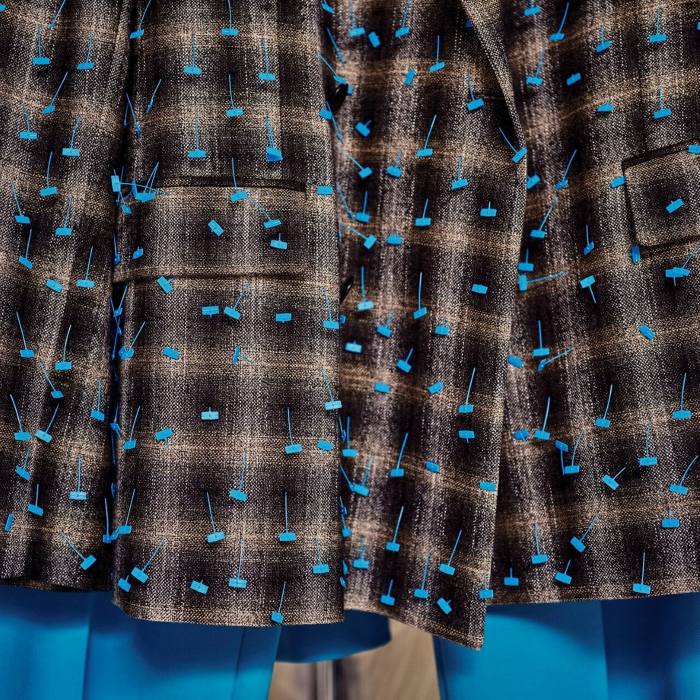
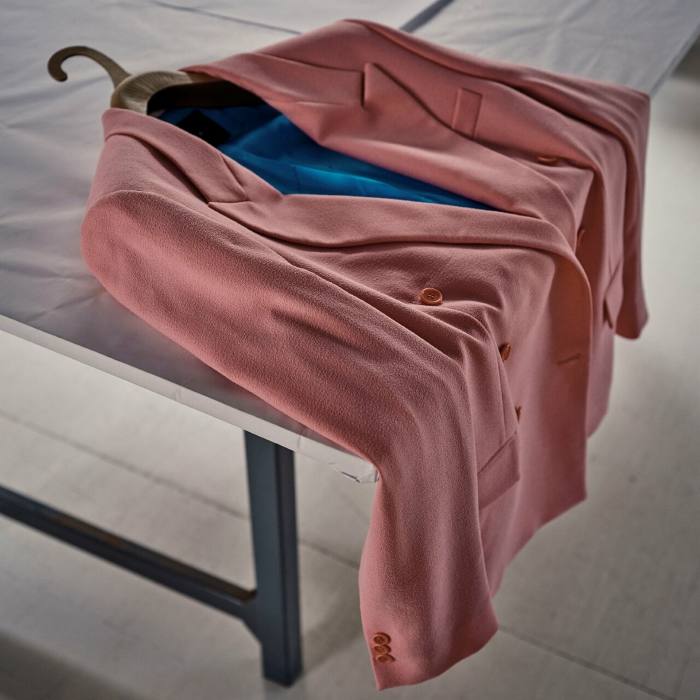
With complex construction that calls for asymmetry, upside-down and transformable elements and integrated accessories, their pieces require an ambitious legerdemain. The duo riffs on ocean-side objects such as suits sewn with hand-carved wooden fishing tackle embellishment, blow-up dolphin accessories and blazers with wetsuit fasteners. Tropical palettes are underlined with statement blues — part of their homage to the ocean. It’s fun, yes, but elegant.
Botter collections are made from a target of 80 per cent recycled marine plastic, with the remainder natural materials such as wool and organic cottons. The duo spent lockdown establishing a coral nursery near Curaçao, donating a percentage of their Andam win towards an initiative against coral bleaching. “We are partnering up with bio researchers on the possibility of growing algae into yarns,” says Botter.
For Botter and Herrebrugh, who run the business side of the brand together, the magic arises from a mutual regard. “I think the challenge is really to have this level of respect for each other, because you’re creating something very emotional but sometimes you need to be very rational as well,” says Herrebrugh. “We keep each other grounded and we respect each other — and we work very efficiently, honestly. If there’s two of you, it’s much easier to help each other out in certain situations. ”
The duo remain focused on making a material difference to their industry. “We have always had this [desire] to change something, and I feel that we are being heard now,” says Botter. “We’re excited in what we envisioned for the brand but instead of [just] talking about the future, really showing the future in materials,” says Herrebrugh.
Christophe Lemaire and Sarah-Linh Tran
Paris-based duo with a mission to elevate everyday life

At the Lemaire spring 2023 presentation in June, models were dotted around the halls of the Musée des Arts et Métiers in Paris in various states of routine: taking the stairs in slouchy utilitarian separates, reading paperbacks in easy draped blouses, writing notes in gauzy ivory shirting. Lemaire’s clothes are perfect for such grounded pursuits — and looking effortless while doing it.
“We are very much driven by everyday life. We like to cook, we clean our dishes, we bike around the city. This humble, daily life approach is crucial in our vision,” says Christophe Lemaire of the eponymous label he creatively co-leads with Sarah-Linh Tran. “There’s always this moment when we try things on ourselves and put our hands in the pockets, and we feel it making sense or not. For us, what is inspiring is to bring a sense of quality or art to improve everyday life.”
Before launching the brand in 1990, Lemaire worked for industry titans such as Thierry Mugler and Christian Lacroix, two designers whose approach to excess is in stark contrast to his own. The designer twice won France’s prestigious Andam prize before pausing his label to take on creative directorship of Lacoste in 2001. Lemaire relaunched his label in 2007 with Tran, followed by a three-year stint in 2011 doing double duty alongside an artistic directorship for womenswear at Hermès. In 2016, he joined Uniqlo as artistic director of its Paris research and development centre and the Uniqlo U line (Uniqlo’s parent company Fast Retailing has had a minority stake in Lemaire since 2018).
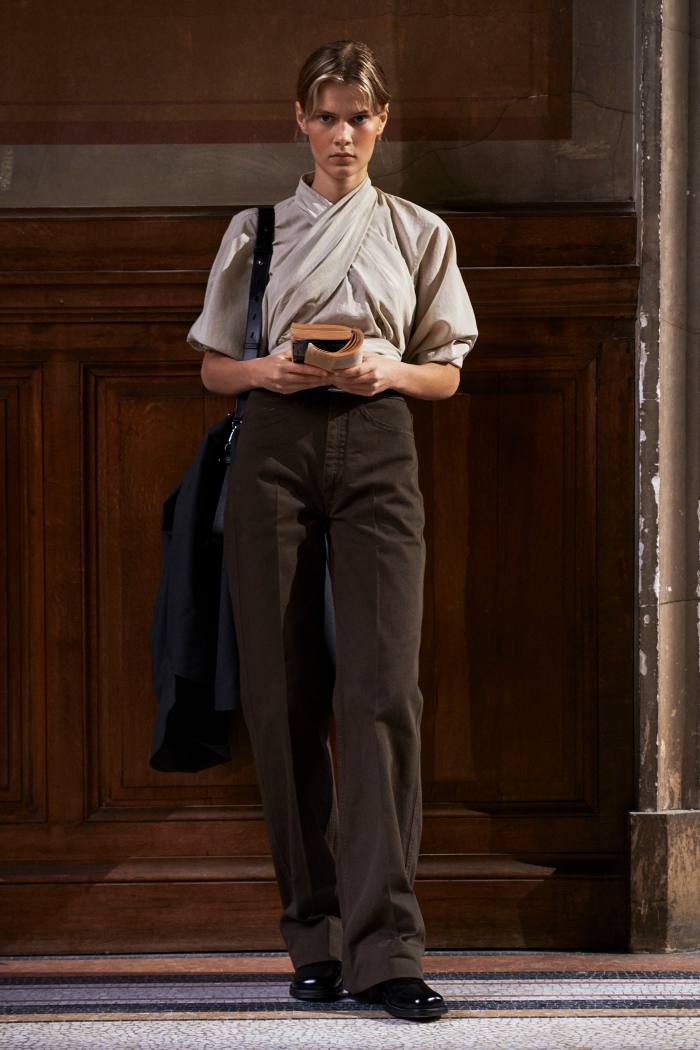

When Lemaire took a step back from Hermès in 2014 to focus on his brand, it was his then romantic partner Tran he enlisted to help breathe new life into the project. After taking an English course in New York and studying publishing in Paris, Linh began doing informal research for Lemaire, soon adding more input on general artistic direction and then on the collections. These days Lemaire, the main shareholder, oversees general management and the collections as a whole, while focusing on menswear and shoes. Meanwhile Tran, also a shareholder, works across womenswear, bags, jewellery and the visual communication of the brand, producing and creatively directing campaigns and runway.
“We agree on the essentials,” says Lemaire. “If you’re creative and you build a company, there’s many moments where you can feel vulnerable. It’s great to have a partner that you trust. There are also times when we challenge each other, when we feel we are becoming a bit complacent, the other one says, ‘Maybe push it a little further’ — like a sparring partner.” Tran adds, “We believe in dialectics, we all have our strengths and weaknesses, with time we know what they are. It’s very balanced.”
It’s a good thing the duo agree on the essentials, as essentials — classic wardrobe staples such as blousons, silky pants, culottes, and trenches with clever updates that evolve seasonally — are a key aesthetic ethos for the brand. Transitions between seasonal collections are soft, with separates designed with a sense of longevity or timelessness in mind and the intention to be built upon as the wearer begins to know what suits them. “We like this idea of growing with people, getting older with their wardrobes and enhancing the beautiful patina of those elements,” says Tran, describing seeing teenagers wearing their signature twisted pants and a certain long-term Lemaire devotee in her 80s who has worn the brand since its inception.
The duo intend to stay true to their ethos: Keep it simple. “We want to grow, but we want to remain faithful to our values,” says Lemaire. “Small is beautiful. We know that we might remain a niche brand — we like that.”
Holly Wright and Camille Perry
Pair behind label Tove learnt the ropes at Topshop
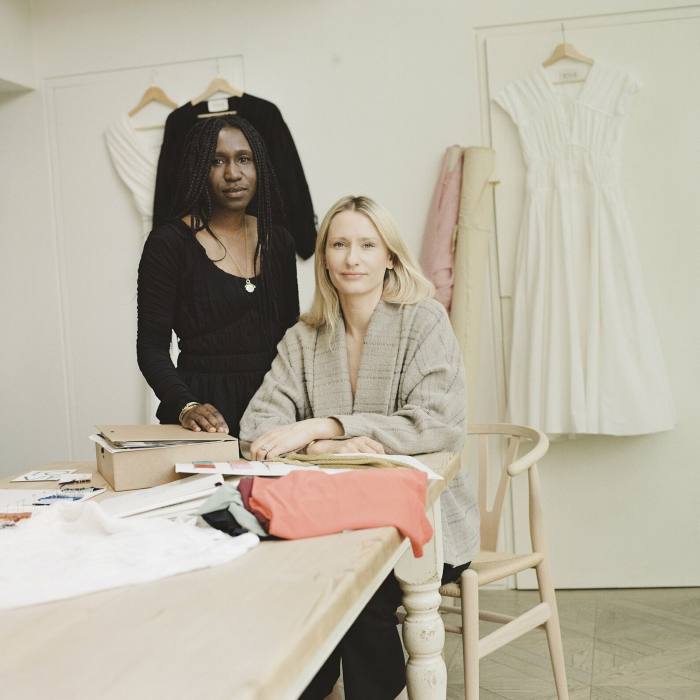
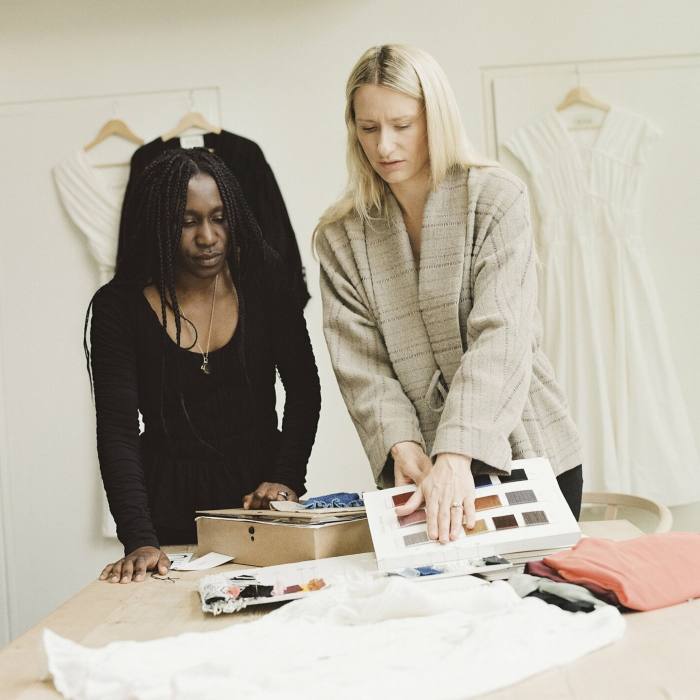
When a design duo say that they can intuit each other’s thoughts it’s perhaps natural that they can also intuit what women want to wear. Self-professed introverts Holly Wright and Camille Perry, who met while working at Topshop during it’s Noughties heyday, realised their symbiosis almost immediately. “Even our colleagues remarked upon it,” says Perry, who, back then, was a buyer; Wright was a designer. “We always had the same opinions on stuff, we’d always look at something separately and both draw the same conclusion — it was almost unspoken, even then,” she says.
That telepathy later evolved into their own design language at Tove, the womenswear label they established in 2019. Beginning with dresses, the London-based brand has since expanded to offer pieces that appeal to women wanting a sort of polished put-togetherness without the effort. There’s smart cotton tops and tailored trousers that are ideal for the office, sexier button-down knits — great for a dinner date — and an array of mini and midi dresses to take you from wedding to weekend, depending on the shoe.

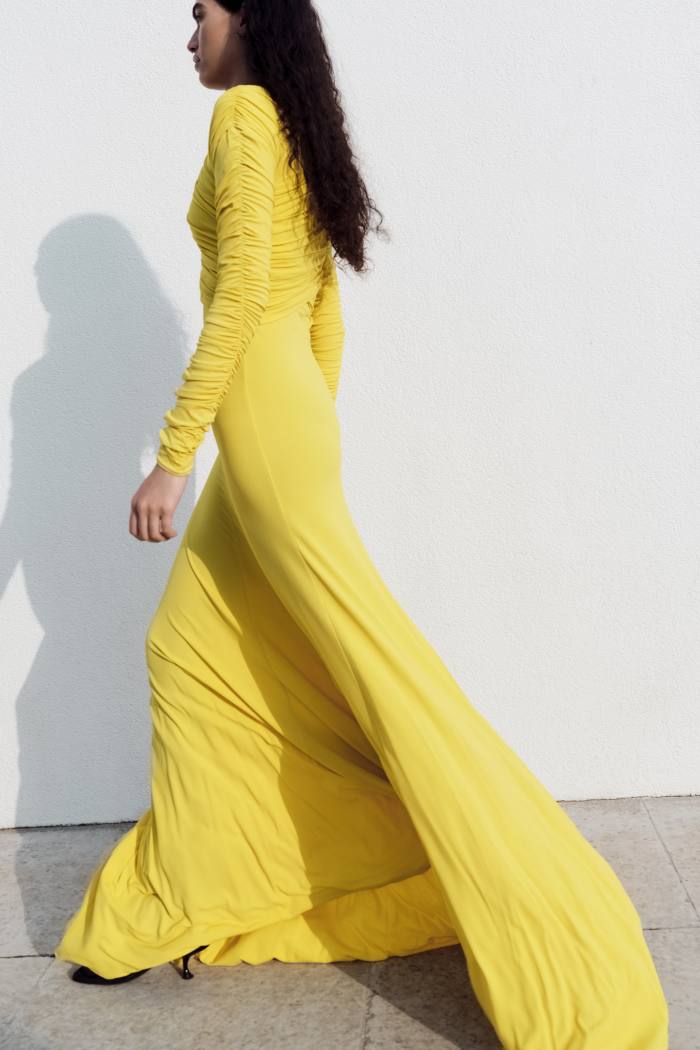
“I basically said to Cam, ‘Would you ever want to start a brand with me?’” recalls Wright, with a playful modesty that feeds into the clothes. They saw a gap in the market for “timeless, modern and feminine clothing . . . that appealed to young, professional women”, says Wright; ones who might aesthetically enjoy The Row, Toteme, or Phoebe Philo’s Celine. But a realistic price point was key. “Primark destroyed the high street. Ganni and Rixo had come in and became the quality that Topshop Unique used to be,” says Wright of the retailer’s premium line. Growing up, they’d both loved Miu Miu — at the time sold as more affordable diffusion lines to Prada, but which had, like luxury, gotten “unobtainably expensive . . . there was nothing in the middle”, she says. “That was our sweet spot.”
Almost instantly they hit upon a winning sartorial formula. Their SS20 £455 Ceres dress was a hit during the early days of the pandemic, with its billowy shape and bright yellow colour. It was easy, breezy and looked radiantly optimistic — a palate cleanser from sweatpants and news-related stress. “Fiscally and socially, it was the season of the Ceres,” says Perry, who is in charge of the spreadsheets. At a point when all other brands were heavily discounting their wares, Tove was selling out.
Now, they’re building on that momentum. This autumn, they are launching their first denim designs and will present their first full ready-to-wear collection for SS23 at New York Fashion Week. The jeans are “that perfect pair you always see on Instagram but can never find”, says Wright, of the boyfriend silhouette that’s baggy on the leg but sits above the hip. They’ll come in a stonewash and navy, not indigo. “It’s more elegant,” says Wright.
Though they started with dresses, it was always their plan to expand into a whole wardrobe offering. “We learned so much about our customer [at Topshop] — who she was, what she wanted to spend,” says Perry. Access to weekly retail reports taught them both how to be nimble: it showed what was selling, and where. “It got us into the practised mindset of knowing how to spin out a garment that was doing well,” says Wright. This savvy came in handy with the still-available Ceres. Its ruched bodice shape has been turned into a floaty bohemian blouse (Cleo), a short-sleeved maxi (Eloise), a long-sleeved version (Lexi), a mini (Clara), and a peplum-frilled top (Thea) — in a range of colourways.
Perry refers to Wright as her “wingman”. “We’re better together; that confidence in each other and support helps us move the business forward quickly,” she says. “It makes us brave.” Allies in life, creating allies for the closet. In Tove we trust — they hope.
Emma Chopova and Laura Lowena
UK-Bulgarian partners who turned despair into triumph

In June 2018, London-based designers Emma Chopova and Laura Lowena ran out of hope. The two had spent their first year after graduation setting up their label Chopova Lowena, but without any financial backing they kept running out of money. “We got to the end of that year and we said, ‘we need to start selling clothes or we need to figure out something else’,” says Lowena, 31, sitting next to Chopova, 30, in the duo’s south London studio.
Chopova Lowena’s experience is not unusual for young designers, but is a reminder that sometimes following instinct, even if it goes against the grain, pays off. After a year spent trying to tone down their boisterous style — an eclectic mixture of sport references and nods to folkloric, Victorian and traditional dressing — the designers decided to let go of their inhibitions. “We really went for it and our aesthetic came into life,” says Chopova. It was then that MatchesFashion came calling, ordering about 30 pieces that sold out in a day. The brand now has more than 40 stockists worldwide, including Dover Street Market, 10 Corso Como and Nordstrom. Among its celebrity fans are Dua Lipa and Olivia Rodrigo, who donned a custom purple look from the label on the Glastonbury stage in July.
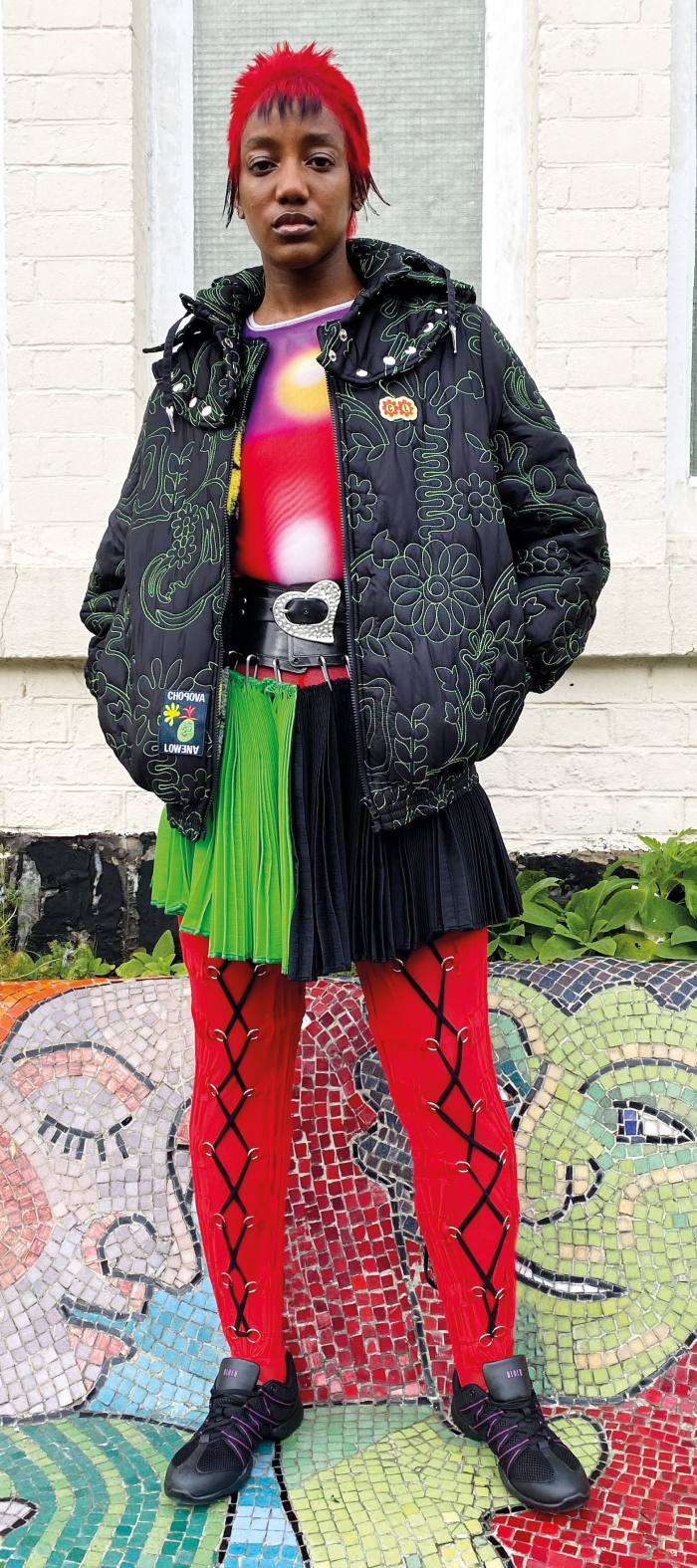
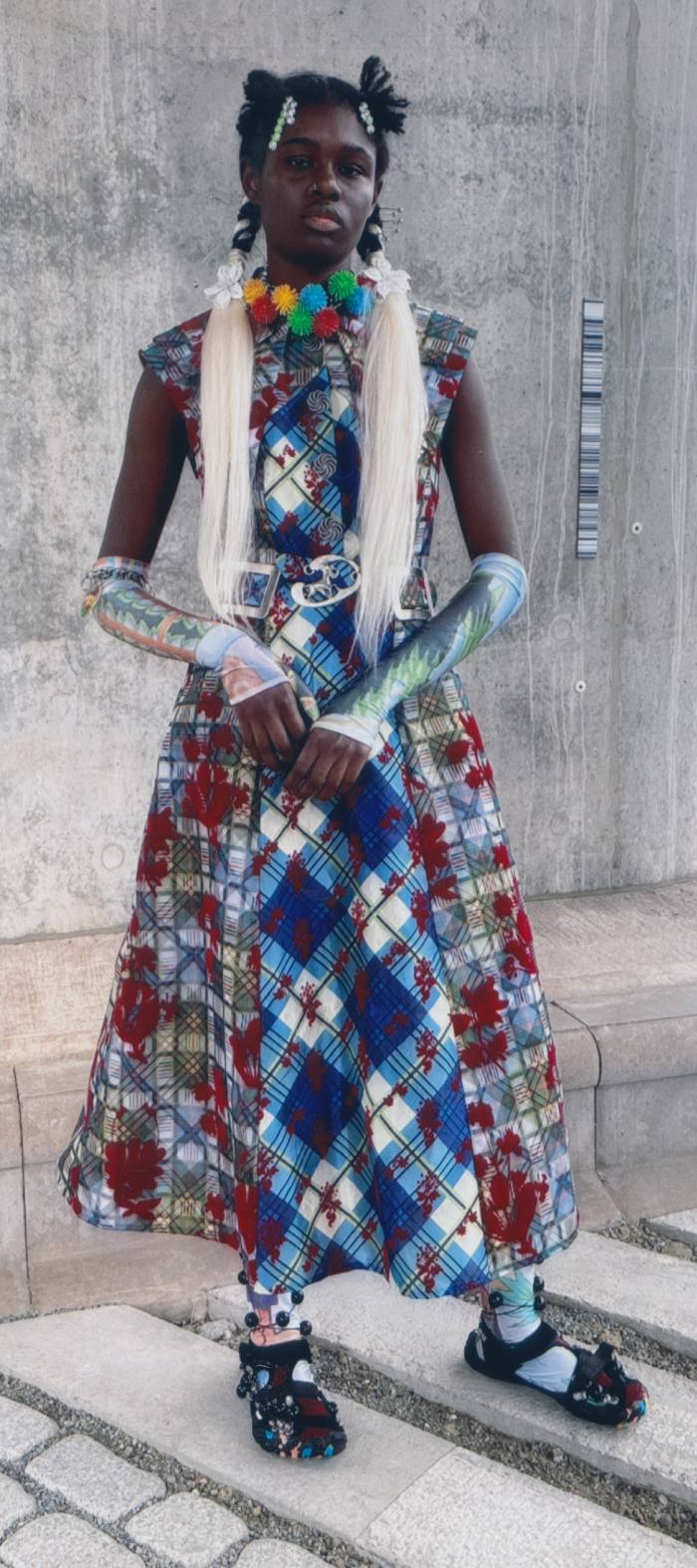
The designers first met in 2011, while studying for BA degrees in womenswear at Central Saint Martins. Born in Sofia, Bulgaria, Chopova had lived in New Jersey since the age of seven, and was eager to meet new friends; Lowena, who hailed from Somerset, was quieter but a friendship quickly developed over a shared love for colour, maximalism and traditional dressing.
“Our work was a lot different from anyone else’s. At the time it was cooler to be minimal, so the opposite of what we liked,” says Chopova. They applied to the Central Saint Martins MA womenswear course as a single creative entity despite having only done one project together. “It was a dive in the deep end,” says Lowena, but a risk worth taking because “I felt like I understood Emma’s work more than I understood my own”.
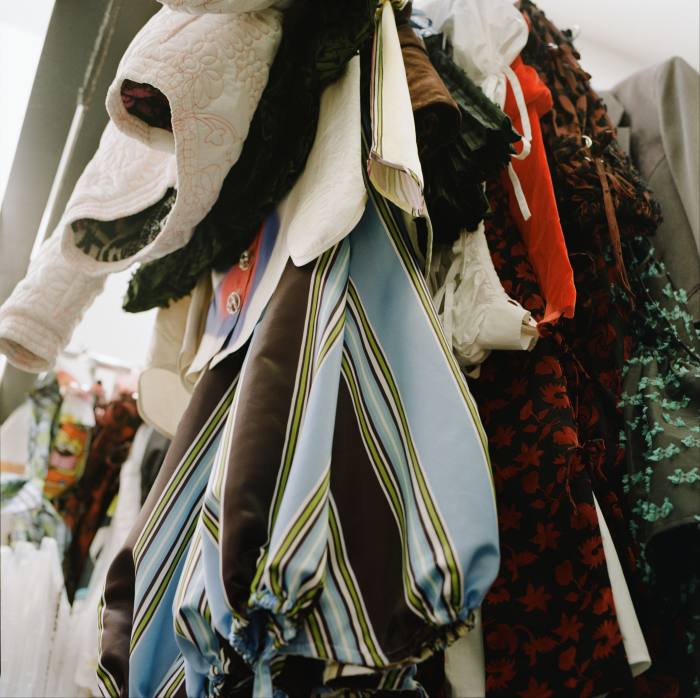
To create a new collection, the designers, who are equally involved in the creative process, usually pick one influence each and then mould them together. So far, they have combined Romanian traditional costumes with Roller Derby uniforms for SS21; surfer and skate culture staples with Germanic traditional dress for SS22; and ice hockey kits with Renaissance faire dressing for AW22. The result is an explosive mix of artful silhouettes and garish prints with a nostalgic, sporty undertone that perfectly espouses the creative, playful and eclectic fashion moment we are living in.
The brand has grown swiftly — output tripled in the past year, according to Chopova — with family members recruited to help run the business. Chopova’s mother, Iolanta, sources fabric in Bulgaria, her father, Kamen, is director of Chopova Lowena Bulgaria, a subsidiary of Chopova Lowena UK. In the UK, Lowena’s mother, Rachel, is in charge of cash flow and business plans, while her sister, Alice, is book-keeper.
“We couldn’t have done it without them,” says Lowena. It’s to their respective parents that they had to pitch and justify the brand’s next big expense: Chopova Lowena’s first fashion show, planned for this September in London. The designers see the show as a coronation of their past years’ work. “We’ve done lookbooks and focused on sales, and that built us up,” says Chopova. “It’s really hard to be told how to do it when you come out of university and think that everything is done in one particular way,” says Lowena. “I’m glad we stuck with what we wanted to do and did it the hard way.”
Sébastien Meyer and Arnaud Vaillant
Co-founders of French label Coperni
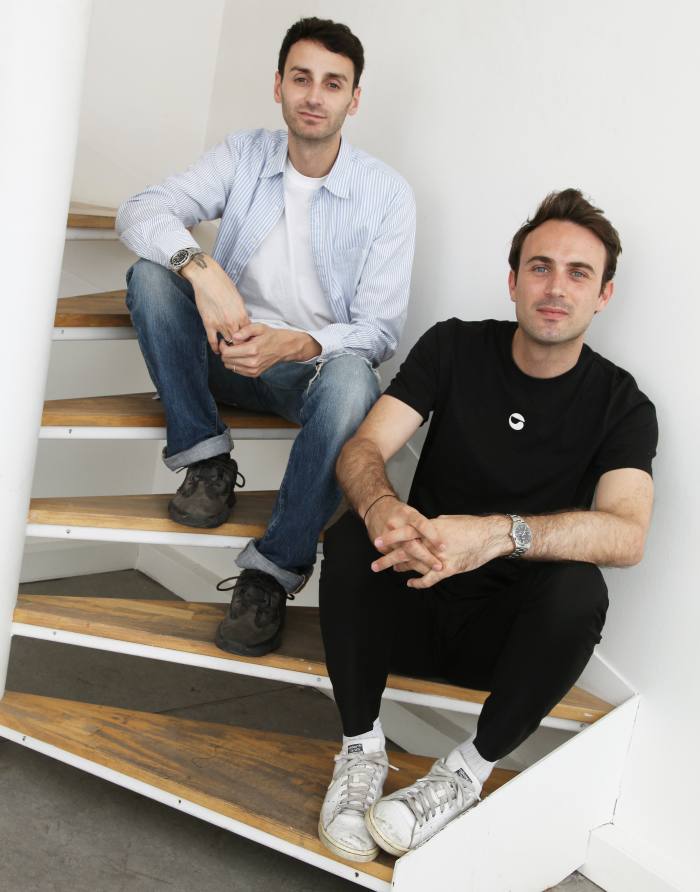
It was love at first sight for Sébastien Meyer and Arnaud Vaillant, co-founders of French label Coperni. “Let’s say we met on a Monday, on the Tuesday we started working together,” says CEO Vaillant, 32, speaking on Zoom from the label’s Parisian headquarters. “What we loved was that we were each other’s opposites,” adds creative director Meyer, 33, sitting next to his now husband. “I was very excited by your freedom, your creativity, your vision, and I guess that you were very reassured by my pragmatism,” Vaillant responds. Both credit their differences as key to Coperni’s success. “It’s what makes the magic happen,” says Meyer. “If Sebastian goes white and I go black we never do grey. We always try to take a radical decision,” explains Vaillant.
Case in point: their autumn/winter 2021 show in March of that year, when France’s Covid-19 restrictions meant that traditional fashion shows weren’t allowed. Vaillant wanted to play it safe and showcase the collection digitally, but Meyer was eager to do something more unique. His idea: organise a real-life drive-in, with guests watching the models from parked cars. “When he came up with the idea I said, ‘You are crazy. We are too small, it’s too complicated, it’s too expensive and we don’t have the right team to follow such an ambitious project’”, remembers Vaillant. But others in the team endorsed Meyer’s idea and Vaillant capitulated. “It was very stressful for me, as the CEO of the company, because it was risky,” he says. “But it worked.”
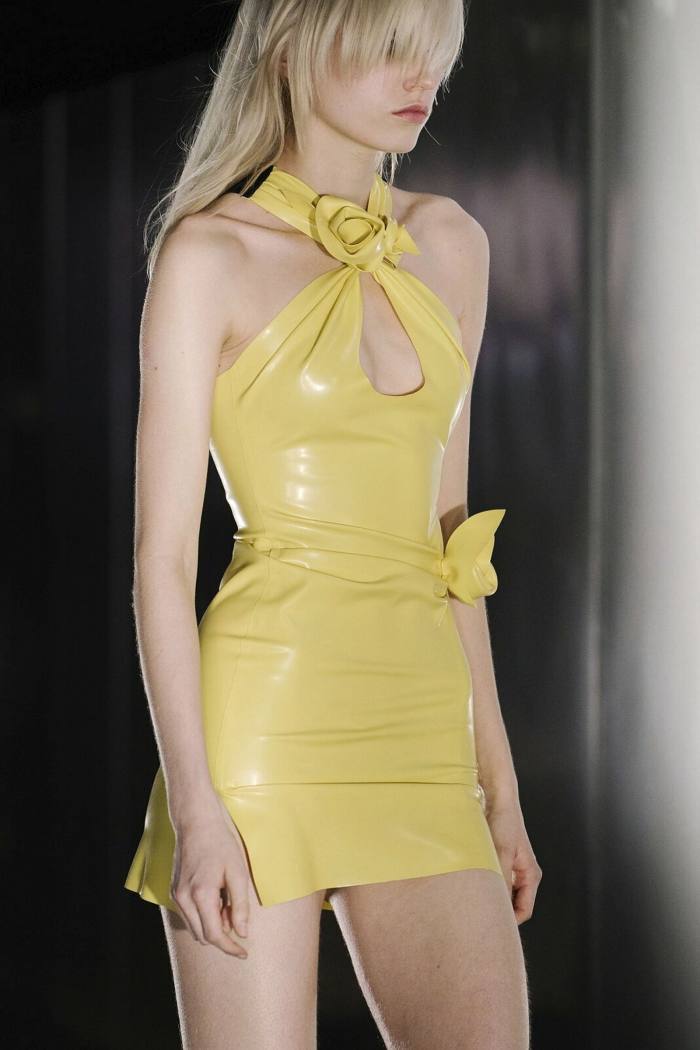

The couple met in 2009 at Mod’art International Paris, where Vaillant was studying fashion business and Meyer fashion design. In 2013, after graduation, they launched Coperni Femme, a quintessentially Parisian label that offered French style staples such as minidresses, A-line skirts and blouses decorated with modernist graphic touches. The brand received encouraging reviews from the press, and accolades including the Andam Creative Label Prize in 2014 and a nomination for the LVMH Prize in 2015. It also caught the attention of Frédéric Torloting and Jacques Bunger, who in May 2015 chose Meyer and Vaillant to relaunch French heritage label Courrèges.
The duo’s aesthetic seemed perfectly aligned with the 1960s futuristic brand and the designers initially garnered attention for the label. But enthusiasm for the line dwindled in later seasons, and Meyer and Vaillant left the brand in July 2017 in what was described as a mutual decision. The experience at Courrèges laid the foundation for the relaunch of Coperni in 2019, without the Femme but with more confidence and a clearer direction.
“We relaunched Coperni with a lot more experience and a lot more vision,” says Vaillant. “The first Coperni was chic. Courrèges was more tech. The new Coperni is a mix of both. It’s techno-chic,” adds Meyer, who also describes Coperni 2.0 as “less strict” and “smart sexy”. “We learnt that fashion is a pleasure,” he adds. The line has remained faithful to tailoring and technology-inspired design — the shape of its best-selling Swipe bag is inspired by the iPhone swipe to unlock feature; another handbag takes its shape from the WiFi symbol. But it has also become softer and sexier.
Since the relaunch, Coperni has been on an upward trajectory. In March, Rihanna chose a custom-made Coperni long-sleeved silver crop top to celebrate her baby bump, and Kylie Jenner made her red carpet debut after having her second child in a tight-fitting latex AW22 Coperni dress. The brand’s glass Swipe bag, created in collaboration with New York glassware brand Heven, has been carried by Doja Cat, Tinashe and Jenner.
Working together, living together — how do the designers switch off? “We are in an industry where we never stop,” says Meyer. “The main challenge in fashion is to last,” adds Vaillant. “Maybe we will rest in 10 years.”
[ad_2]
Source link











